April Gardening Tips and To Dos in the Pacific Northwest
Are you wondering where to start with your April gardening now that spring has finally arrived? I get it! There’s so much to do, and the garden is definitely calling for some love and attention as we gear up for the new growing season.
Today, I’m sharing April gardening tips and to-dos for your Pacific Northwest garden.
I can’t tell you how happy I am to finally feel spring in the air. I’ve been counting down the days until I can spend more time in the garden and greenhouse this month.
And you know what they say — April showers bring May flowers! In the PNW, that couldn’t be more true. So grab your rain boots, throw on a cozy jacket, and let’s get outside. April is one of gardeners’ busiest (and most rewarding) months.
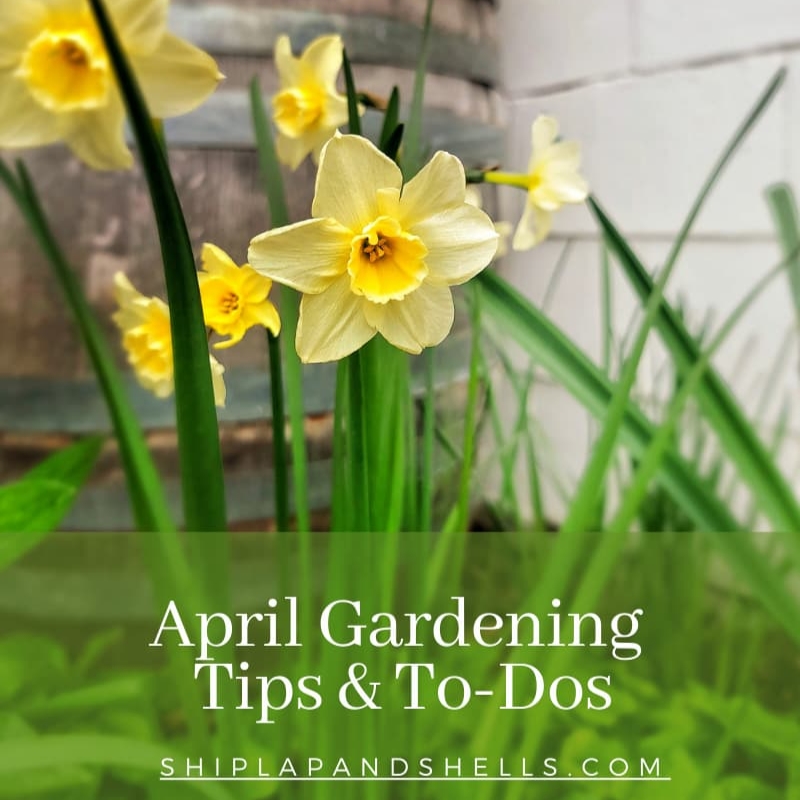
As an Amazon affiliate, I earn a commission from qualifying purchases at no additional cost to you. My blog also features other affiliate links for your convenience. Click here to read my privacy policy.
Understanding April Gardening in the Pacific Northwest
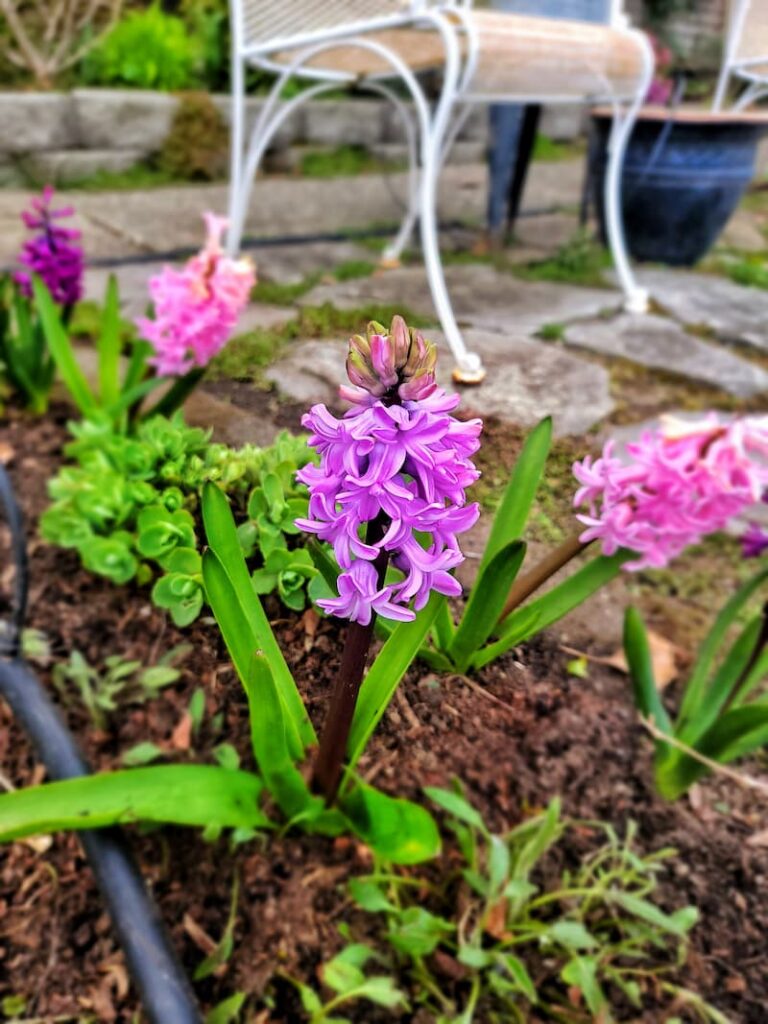
April is a magical and sometimes unpredictable month here in the Pacific Northwest. The days are getting longer, the temperatures are slowly warming up, and everything feels like it’s waking up after a long winter. But along with all that new growth comes plenty of rain (and sometimes even a surprise cold snap or two).
The PNW climate in April is known for being mild but very wet. On any given day, you might start with sunshine, have a rain shower by lunchtime, and end with cloudy skies. These conditions are wonderful for plants—all that moisture helps soften the soil and encourage new growth—but they also mean that timing your garden tasks is key.
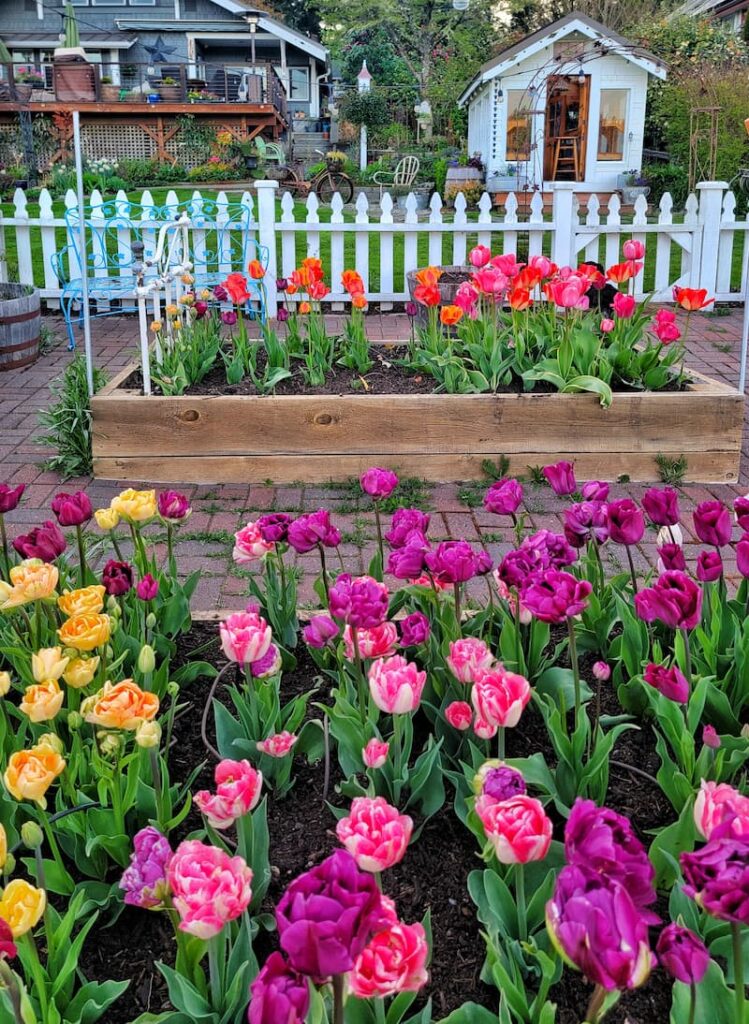
Because the ground is often still soggy from those famous April showers, it’s important not to disturb wet soil too much, which can lead to compaction. Instead, focus on tasks like cleaning up garden beds, pruning spring-flowering shrubs once they’re done blooming, starting seeds indoors or in the greenhouse, and planting cool-season crops like lettuce, peas, and spinach.
April is also a great time to get ahead on weeding (trust me, they love this weather, too) and to start fertilizing perennials and shrubs that are beginning to push out new growth. If the weather cooperates, you can even begin planting hardy annuals and prepping vegetable beds for warmer-season crops later on.
The bottom line? April gardening in the Pacific Northwest is all about working with the rhythms of the weather, staying flexible, and getting outside when you can, even if you have to dodge a few raindrops.
PNW April Gardening To-Dos
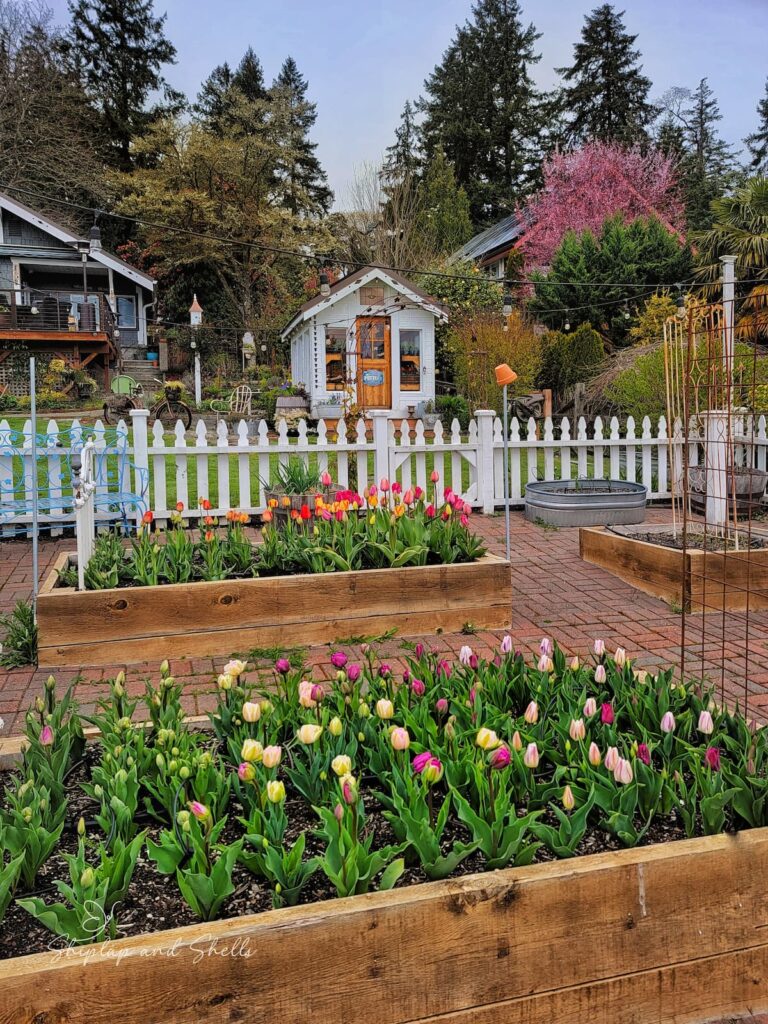
My “gardening by month” to-do list for April is based on zone 8b. If you live in a different hardiness zone, confirm the frost dates in your area and plan accordingly.
Hardening Off Seedlings and Overwintering Plants
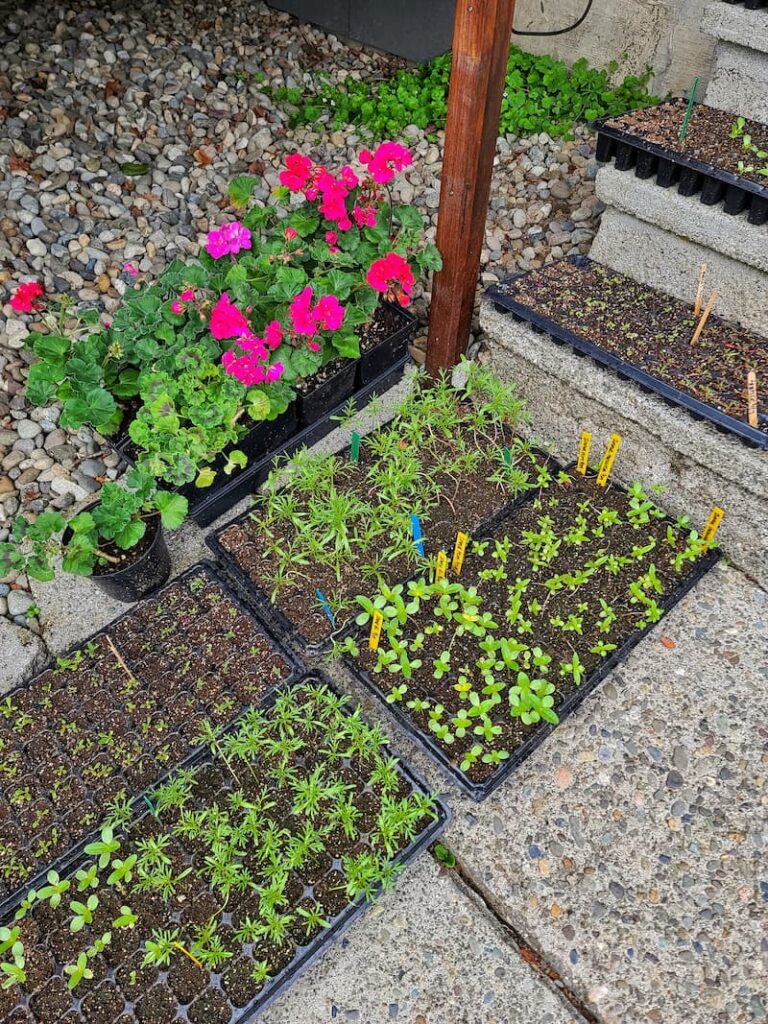
If you’ve grown seedlings or overwintered plants indoors or in a greenhouse, they need to acclimate to the outdoor conditions before being transplanted into the garden.
This transition period is called hardening off. This is when you gradually expose the plants to outdoor elements such as rain, sun, and wind.
Preparing Garden Beds
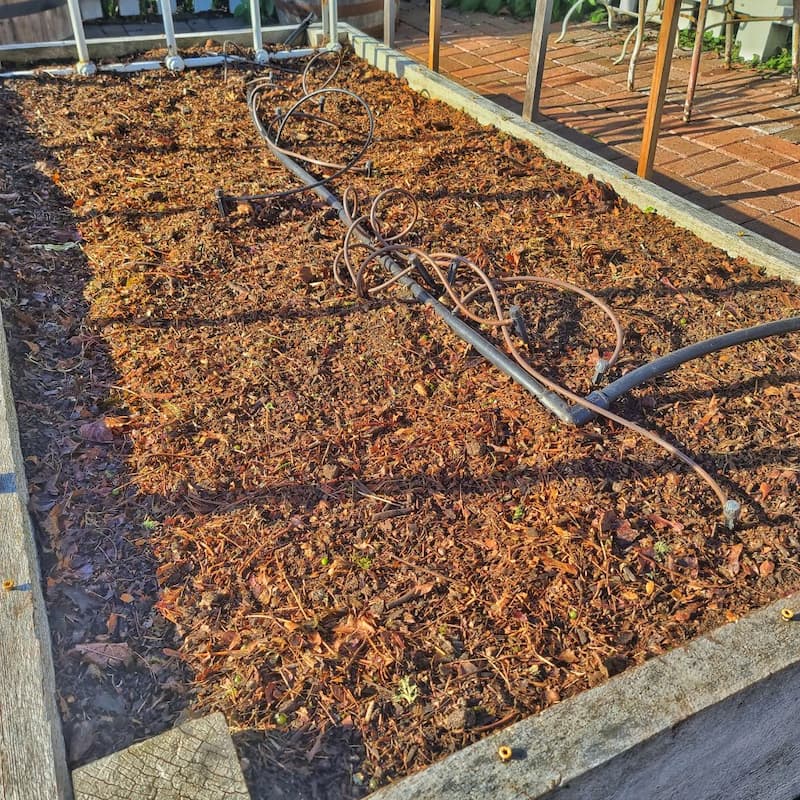
Test the Soil in Your Garden Beds
Experts recommend you perform a soil test to check the nutrient and pH level before planting.
This will help you better understand how your soil will perform and what amendments need to be added.
Soil test options are available. You can buy an inexpensive test or hire a local garden resource center to test your soil conditions.
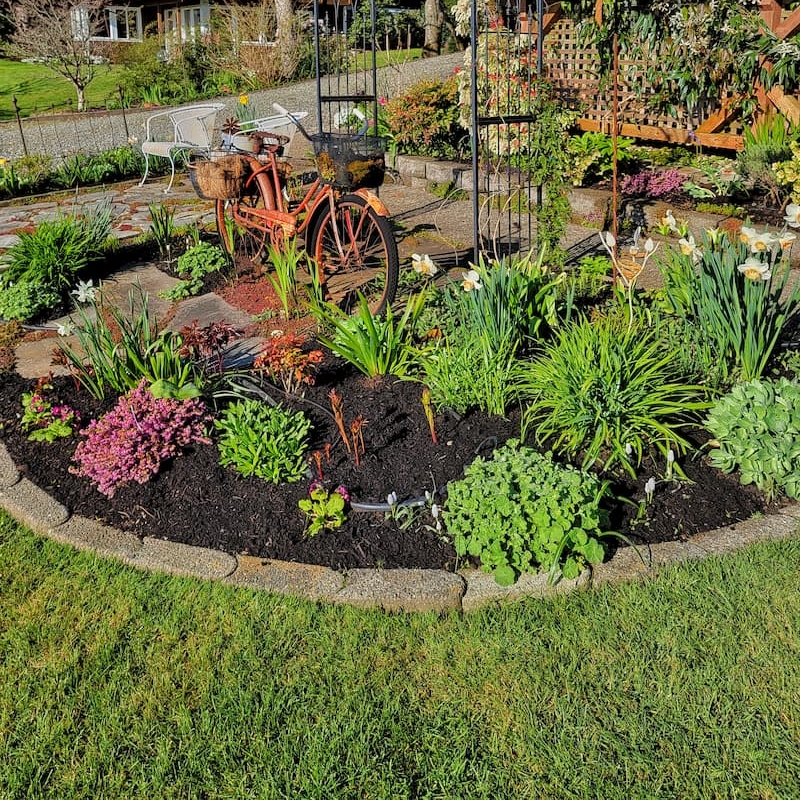
Prepare Your Soil
Work the soil when it’s moist to help maintain good air porosity and soil structure.
To determine if the soil is ready to work, squeeze a handful into a tight ball, then break the ball apart with your fingers. If the soil ball readily crumbles in your fingers, the soil is ready to be worked. If the soil stays in a ball, it is still too wet to work.
Soil can be compacted over the winter, so loosening the soil before planting is important. Remove rocks or roots using a shovel or garden fork to turn the soil when it’s dry and crumbly.
Feed Your Soil
Compost has many benefits, such as improving the soil structure, enhancing soil fertility, helping to retain moisture, and providing valuable nutrients needed for healthy plant growth.
Amend your garden beds with 1-3 inches of compost to add nutrients and help retain moisture in the soil.
April Garden Planting in the Pacific Northwest
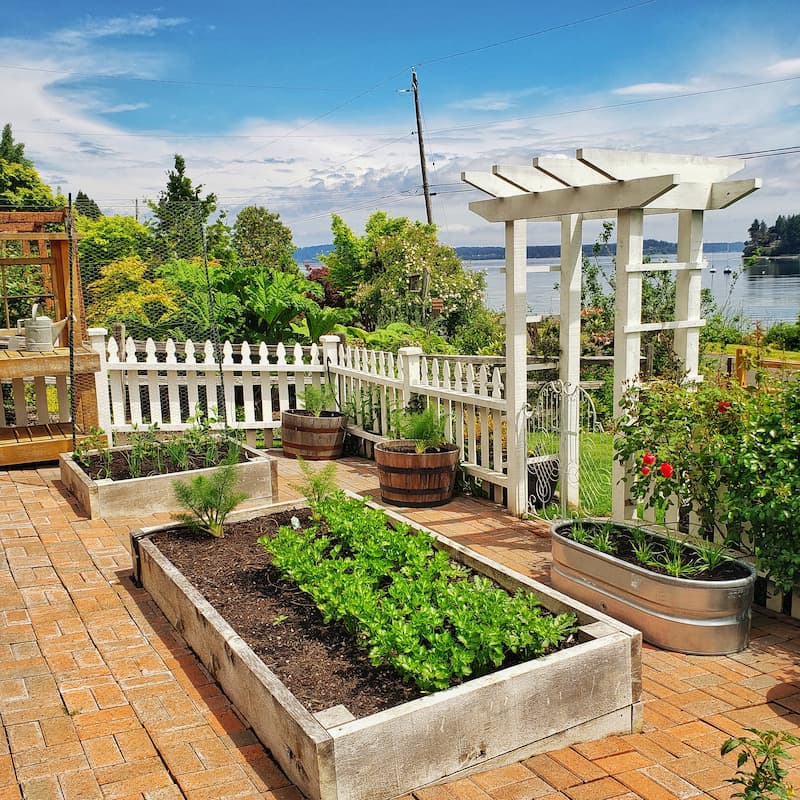
Edible Plants
April is a great month to plant certain fruits and vegetables in your garden. Here are some edibles you should consider adding to your planting schedule for your Pacific Northwest garden…
Rosemary, chives, oregano, parsley, and mint seedlings can be transplanted outside as soon as the soil is workable.
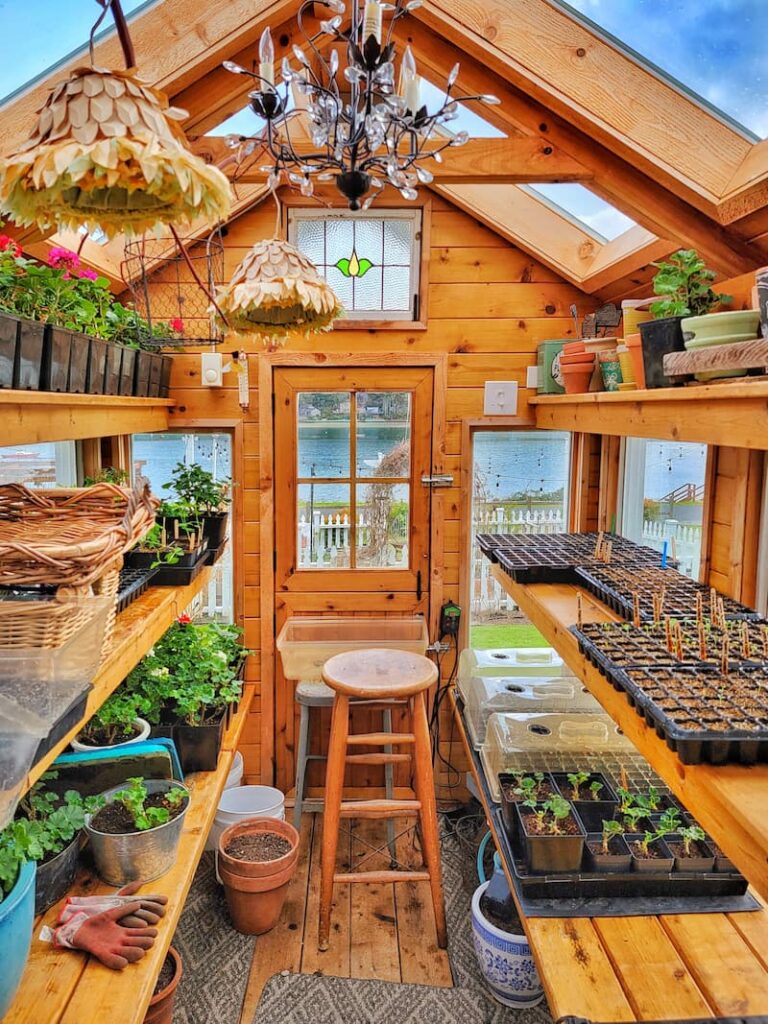
If you’re planning on vegetable gardening, start these veggies indoors:
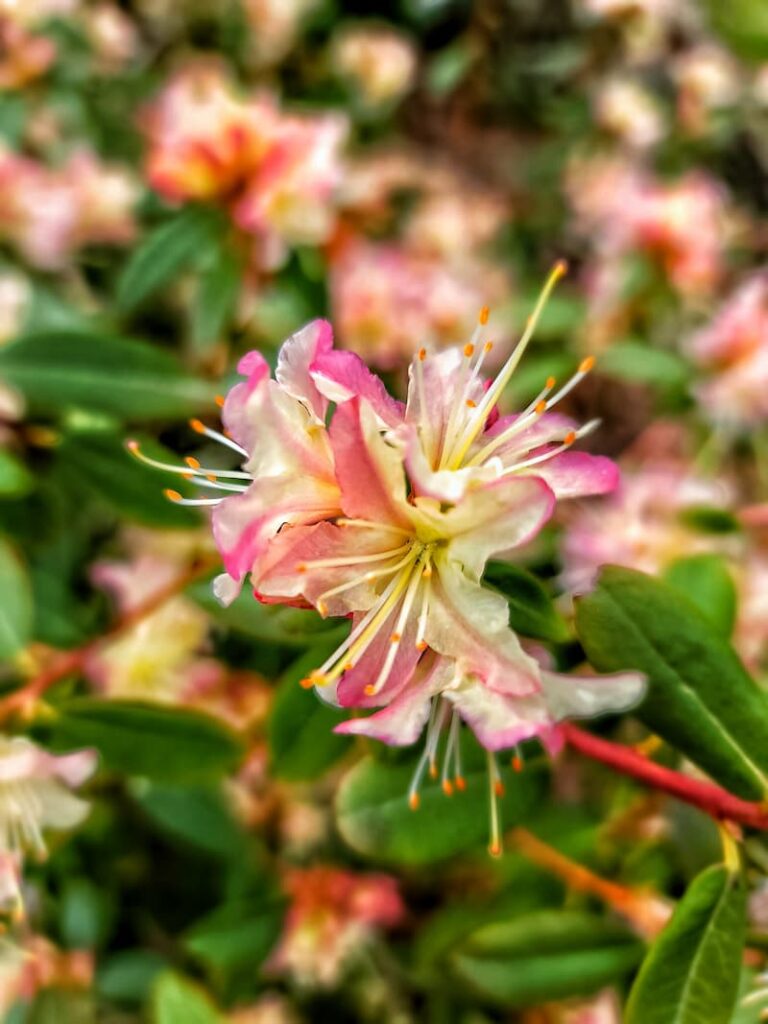
Planting New Perennials
Plant new perennials in the April garden.
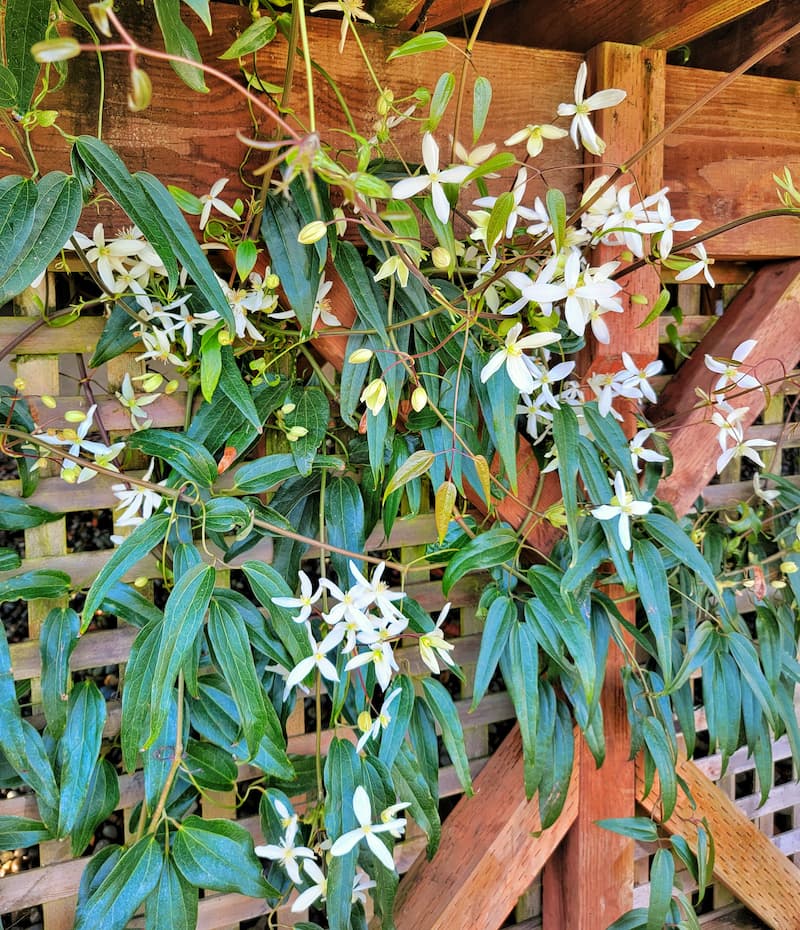
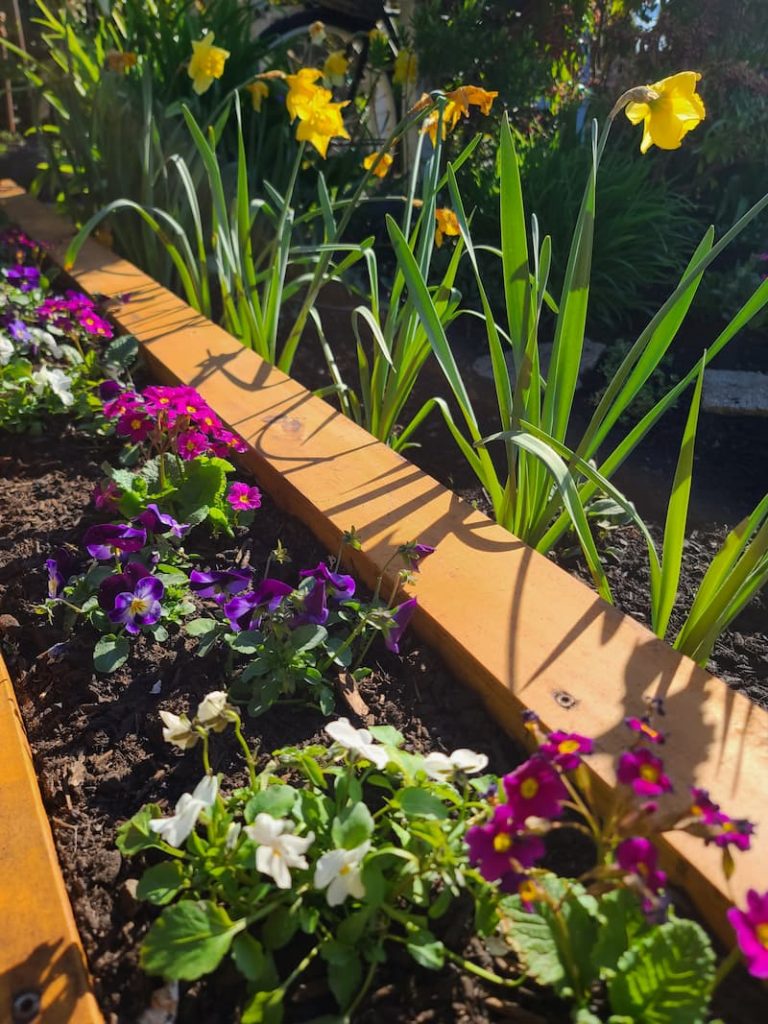
Planting New Annuals
April is the perfect time to start adding some fresh color to your garden with new annuals. In the Pacific Northwest, cool-weather annuals like pansies, violas, snapdragons, and calendula can handle those early spring temperatures and a bit of rain.
They’ll brighten up your garden beds, containers, and window boxes while you wait for the summer blooms to take center stage.
Plant them in well-draining soil (especially important with all that spring moisture) and watch the forecast. If there’s a chilly night ahead, it’s always wise to protect young plants with a frost cloth or bring containers into a sheltered spot.
Adding annuals now gives you instant color and sets the stage for a beautiful, cheerful garden all season long.
Spring Container Planting
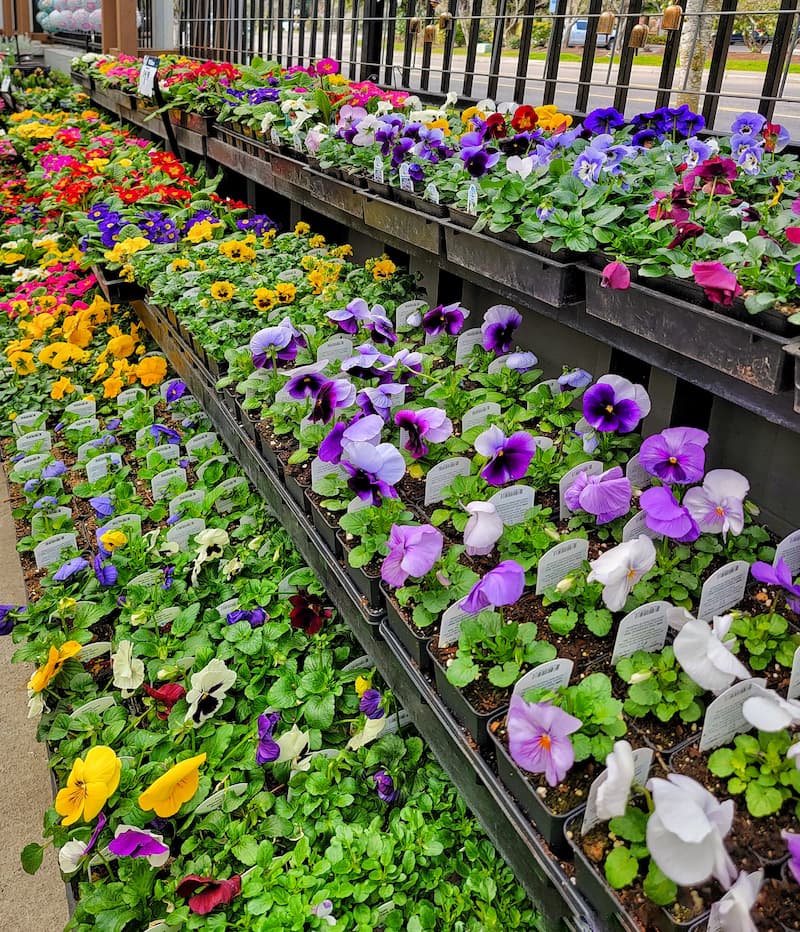
April is the best time to brighten the garden by planting flowers in containers.
Your local nurseries and garden centers should have a wide variety of hardy annuals, such as pansies, violas, primroses, and spring bulb flowers.
If you are still experiencing freezing temperatures in April, make sure you plant cold-loving flowers such as pansies, violas, and primroses.
One important thing to remember is that If you buy annual flowers from a nursery or store, make sure they’re acclimated to the outdoors before you plant them.
When deciding what you’ll be planting in your container, combine plants with similar water and light requirements.
Dividing Perennials and Tubers
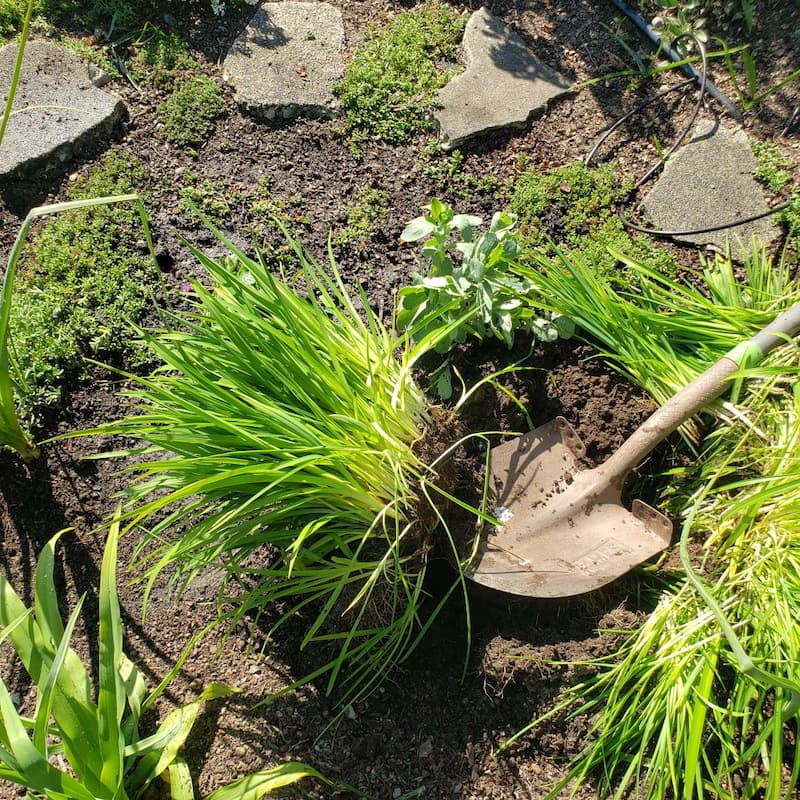
Divide Overgrown Perennials
April is the perfect time to start dividing and transplanting your garden’s summer and fall flowering perennials. These include phlox, black-eyed Susan’s, daylilies, astilbe, Shasta daisies, and sedum.
Give your new transplants plenty of water.
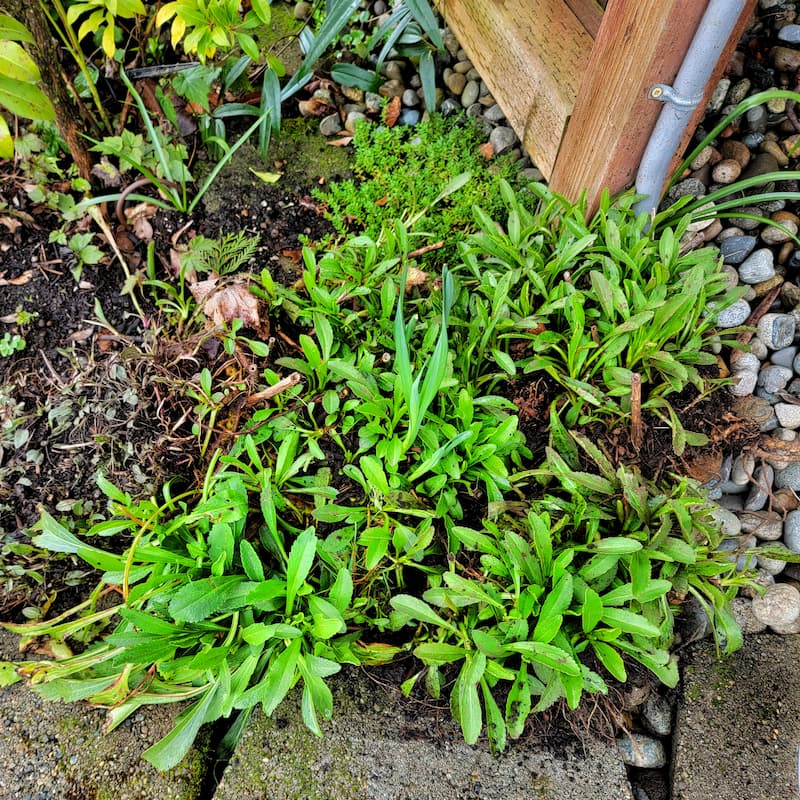
Dividing your perennials is a good way to help keep the plants healthy, prevent crowding, and create more plants for other areas in your garden.
If you don’t divide certain plants every 3-4 years, they can die out in the center of the plant, leaving a bare hole.
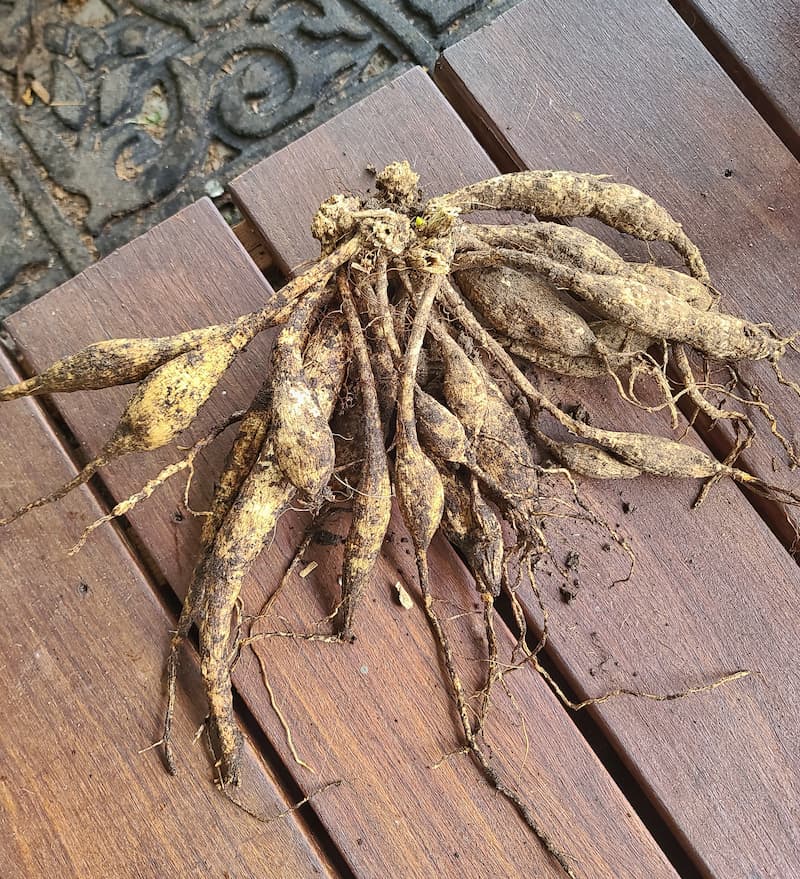
Split Dahlia Tubers
Dahlias grow from tuberous roots and are easily propagated by digging them up and dividing the roots.
Separating the healthy tubers from the diseased or rotted ones will encourage the plant to produce more blooms and be healthier in the long run.
It’s also a good idea to divide dahlia tubers yearly because they grow quickly. If they get too large, they will rot or become too heavy to lift and store.
Pruning Your Garden Trees, Shrubs and Plants
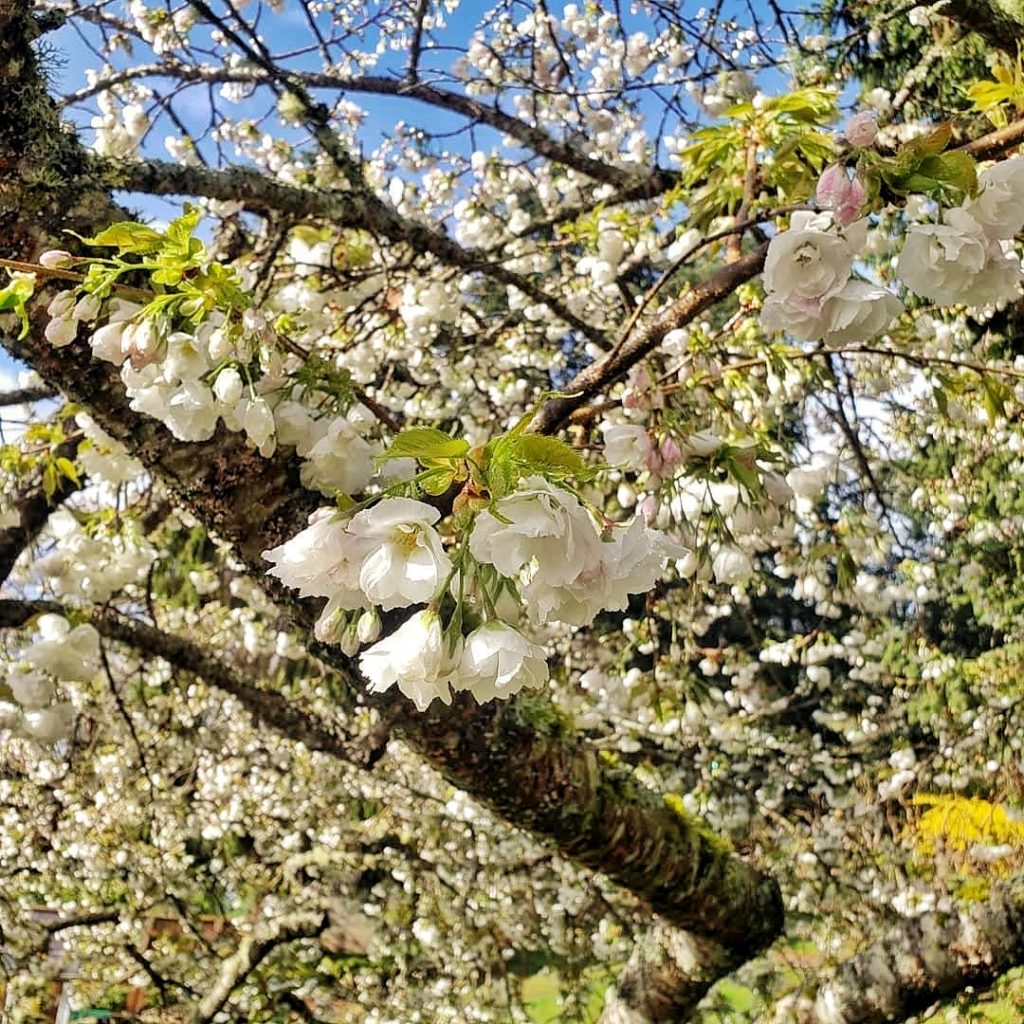
Spring-Flowering Shrubs and Trees
Prune your spring-flowering shrubs and fruit trees after they bloom and the flowers fade. Be sure to do this immediately after flowering so you don’t cut into next year’s blossoms.
Spent Perennials and Grasses
The dead tops of perennials and grasses should also be pruned back to make room for new spring growth.
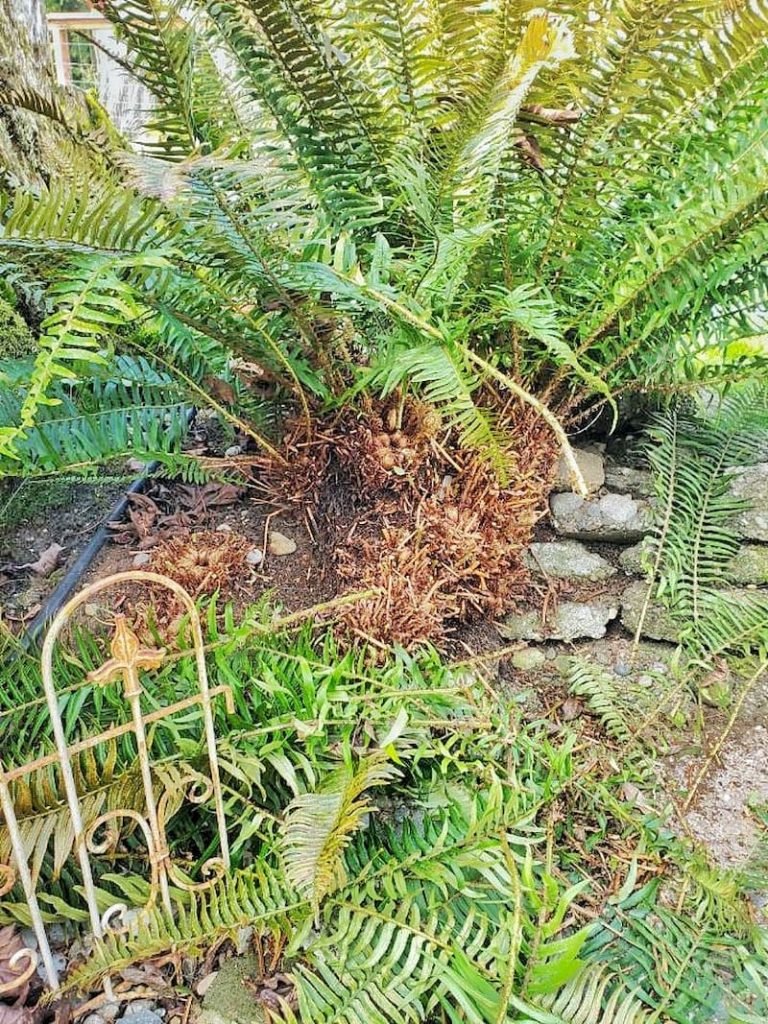
Cutting Back Outdoor Evergreen Ferns
If you haven’t already done so, cut your fern fronds down in April to create a fresh new plant for the rest of the year.
April Gardening Pest and Weed Control in the Northwest

Slugs and Snails
Spring in the Pacific Northwest means that the slugs are in full force.
I’m noticing that my primroses are being eaten right now because I didn’t put down slug bait in time to protect them. I use Sluggo in my garden, which is pet—and wildlife-safe. However, there are more natural alternatives.
Pests
As everything starts to grow in April, so do the garden pests. Slugs, snails, aphids, and other unwanted visitors love the cool, damp conditions of early spring in the Pacific Northwest. Now’s the time to keep a close eye on your plants, especially tender seedlings and new growth, and catch any issues early.
Hand-picking slugs and snails in the morning or evening, using organic slug bait, and encouraging natural predators like birds and beneficial insects can make a big difference.
A simple blast of water from the hose or a mild, soapy water spray usually does the trick for aphids. Staying on top of pest control now will help keep your plants healthy and thriving throughout the season.
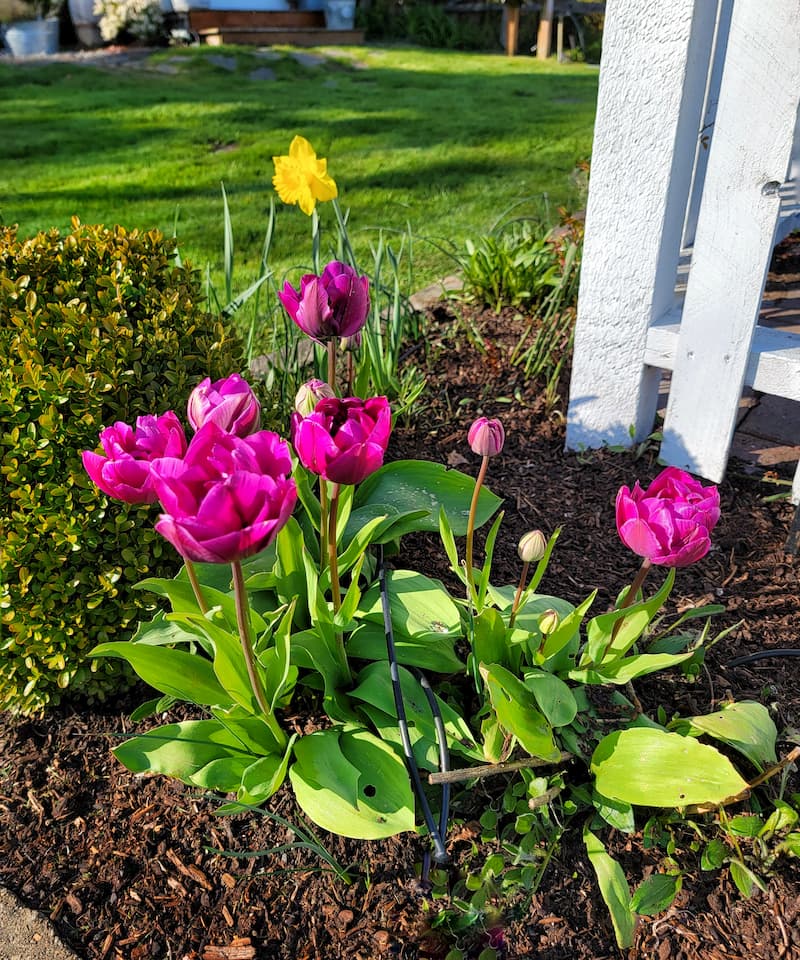
Weeding in the April Garden
If there’s one thing that loves all the spring rain and mild temperatures just as much as your plants — it’s weeds! April is the perfect time to get ahead of them before they really take off.
The good news is that the soil is soft and damp this time of year, making pulling weeds much easier.
Focus on removing weeds before they go to seed. Be sure to pull them out by the roots so they don’t make a speedy return. If you have open spaces in your beds, consider adding mulch after weeding to help keep new weeds from sprouting and make your garden beds look neat and tidy.
April Garden Maintenance

Clean Up the Gardens
April is a good time to clean up garden beds. Pick up fallen leaves and twigs and prune dead limbs in early spring.
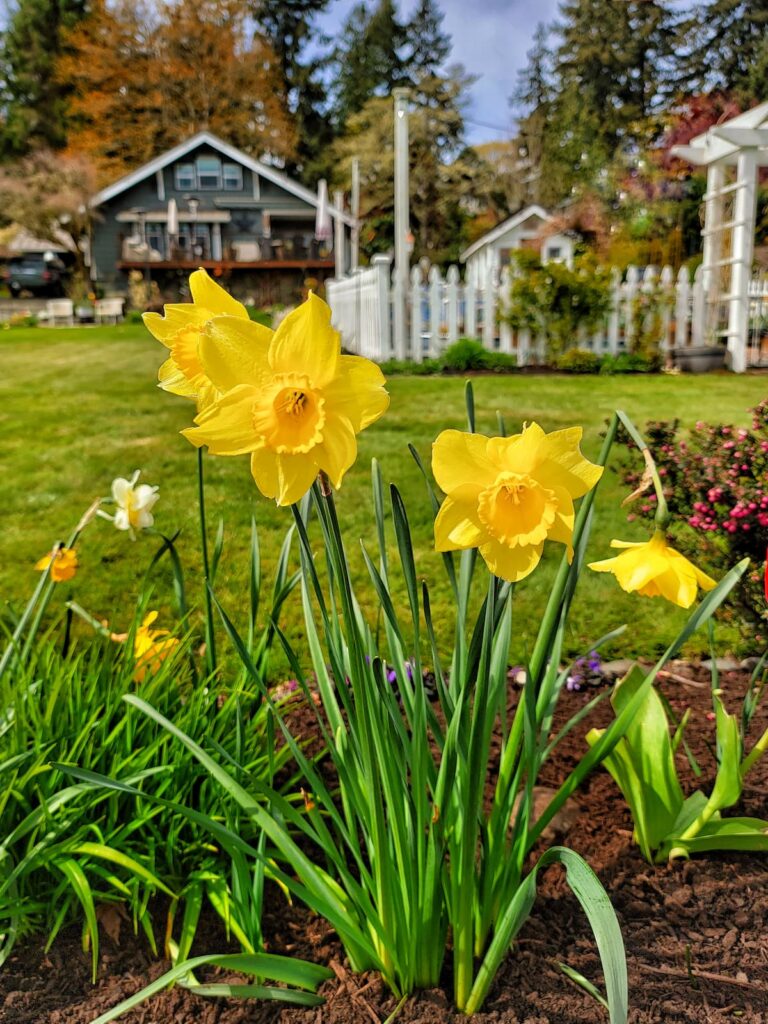
Label Overcrowded Daffodils
Label any clumps of daffodils that are getting too crowded so you can dig them up and separate them this summer. Overcrowding can significantly slow down blooming.
Turn Compost Piles
Turn over your compost pile to help it break down faster.
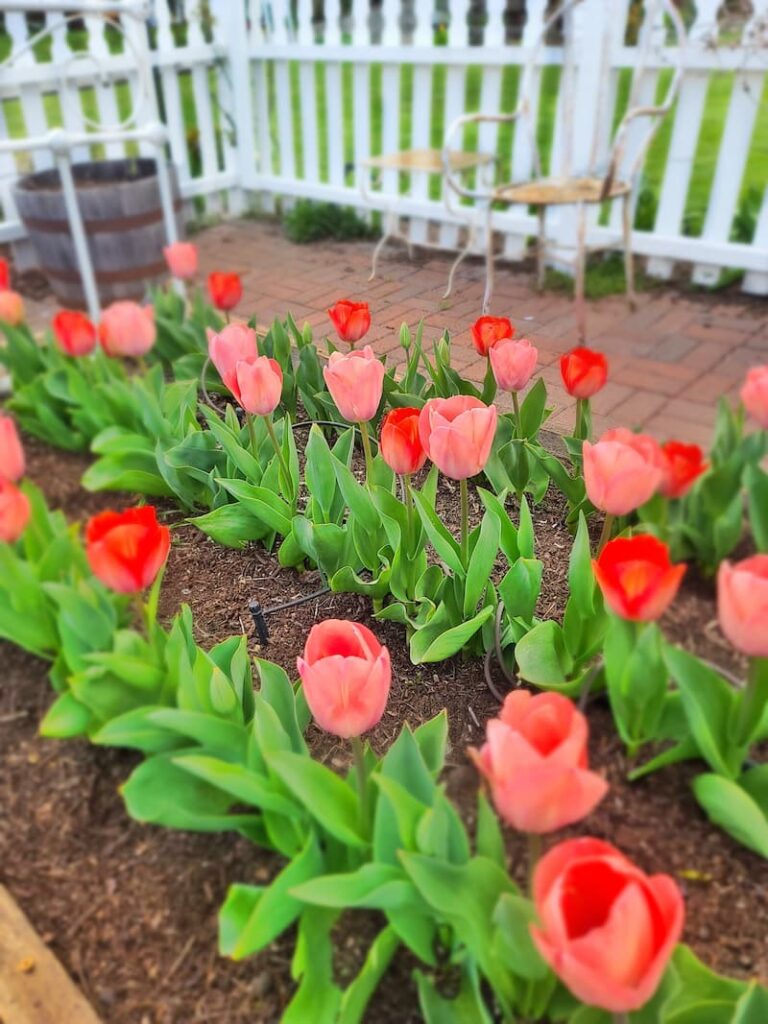
Clean Up Spent Spring Bulbs
When bulb blossoms die, clip the flowering stems as close to the ground as possible. Let the foliage die gradually so it can build food reserves to support next year’s blooms.
Sow or plant hardy annuals in areas where spring bulbs will die back so that they will give you a little help hiding the spent leaves.
Add Lime to the Garden
Sprinkle garden lime in a circle around the base of lime-loving plants to ensure the garden’s pH stays alkaline enough.
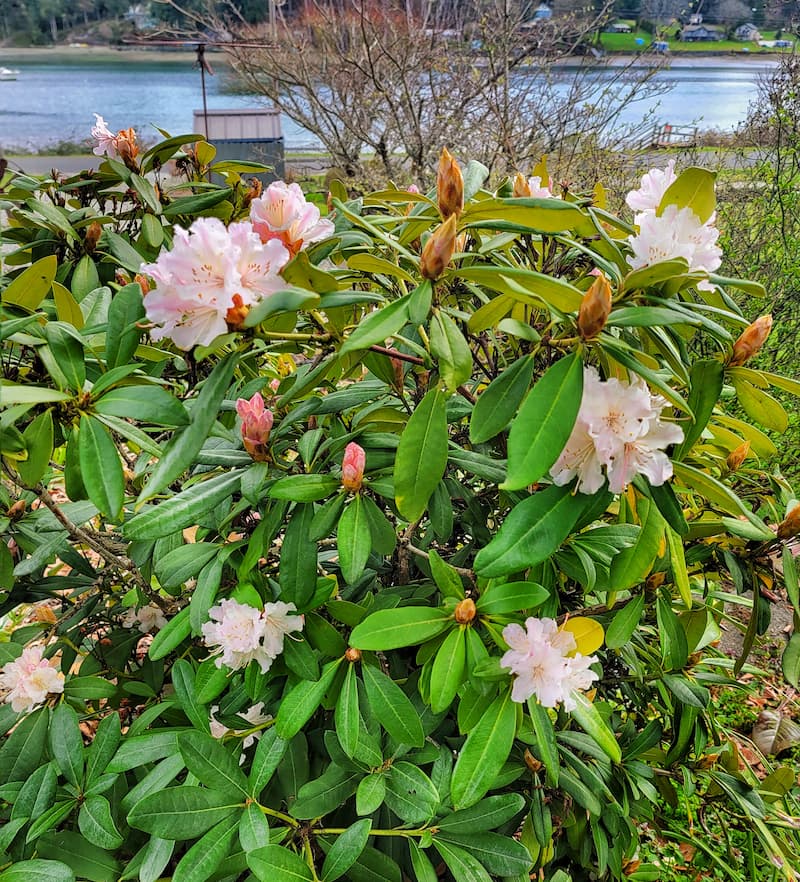
Fertilize Specific Plants
You can fertilize plants in April but wait to feed spring-flowering shrubs like azaleas, camellias, and rhododendrons until they have flowered.
Add Mulch to Garden Beds
April is a great time to freshen up your garden beds with a layer of mulch. Not only does it help lock in moisture during those sunny spring days, but it also keeps weeds from taking over, which is a huge win this time of year!
Mulch also helps regulate soil temperature, protecting tender roots as the weather swings between warm afternoons and cool nights.
Spread a two- to three-inch layer of organic mulch like compost, bark, or shredded leaves around perennials, shrubs, and vegetable beds (just be sure to keep it a few inches away from plant stems). This not only improves the look of your garden beds but also nourishes the soil over time.
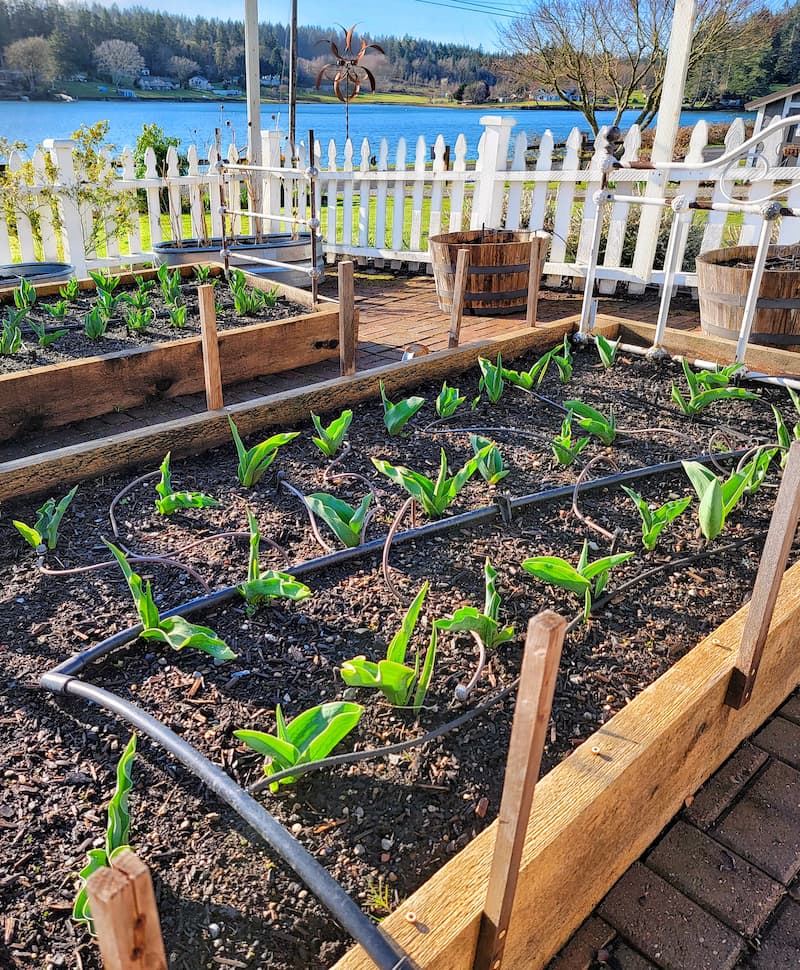
April Gardening To Do List for the Pacific Northwest
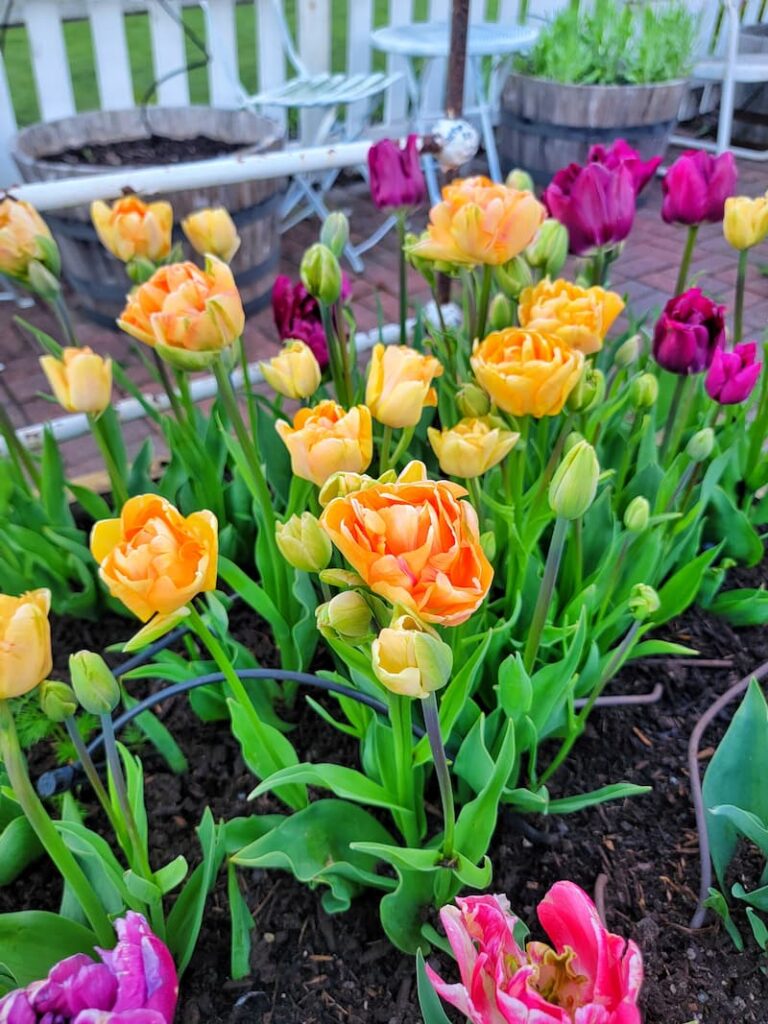
Final Thoughts on April Gardening To Dos in the PNW
April kicks off the gardening season here in the Pacific Northwest, and while there’s plenty to do, it’s all part of the fun! From cleaning up garden beds and planting cool-weather annuals to staying on top of weeds and refreshing your mulch, these little tasks add up to a beautiful, thriving garden in the months ahead.
Remember to be patient with the weather (those April showers are just doing their job) and enjoy the moments spent outside, even just for a quick walk through the garden to see what’s starting to bloom.
Every bit of effort you put in now will pay off with vibrant flowers, fresh veggies, and a garden that brings you joy all season long.
So grab your gloves, embrace the unpredictable PNW spring, and happy gardening!
If you have any questions or additional suggestions, please share them in the comments below. And be sure to share this blog post link with anyone who may find these gardening tips useful.
Until next time,

I’m a self-taught hobby gardener. Everything I share on my blog is my opinion and what has worked for me.
MORE POSTS
For You To Enjoy
Follow Me for More Inspiration
Shop my Amazon Storefront, LTK sources, and my favorite home decor, garden, and lifestyle products. When you purchase from one of my links, I earn a small commission, which helps me continue sharing all the content you expect on my blog.
Be sure to follow me on Pinterest, Instagram, Facebook, TikTok and LIKEtoKNOW.it. Do you like gardening? Join my Facebook Gardening Tips & Tricks group.

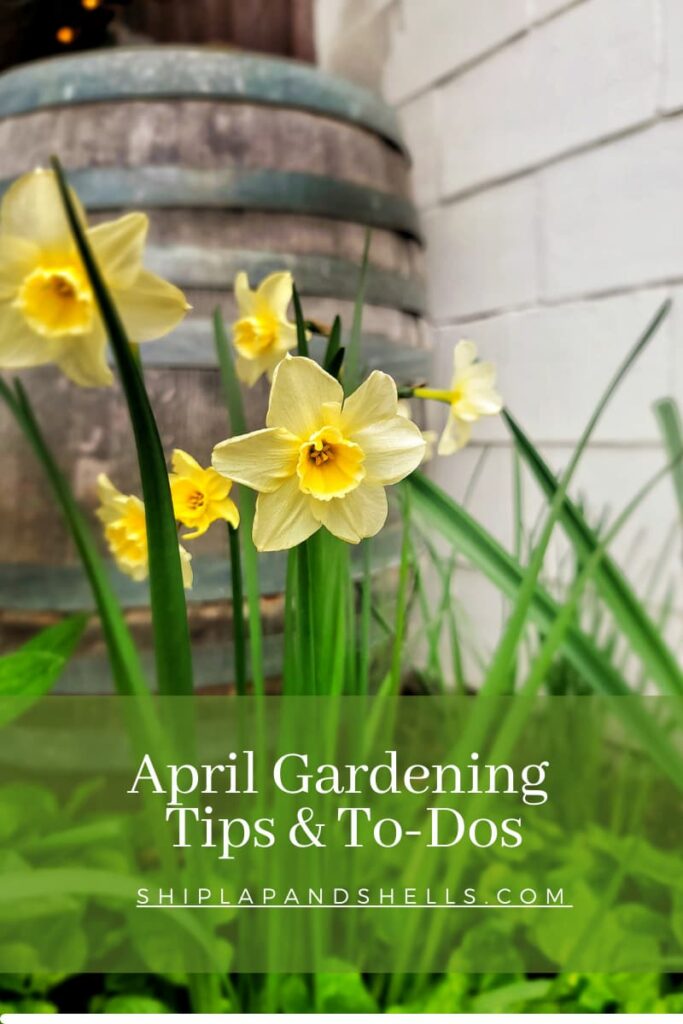

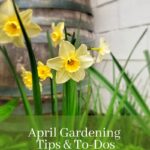

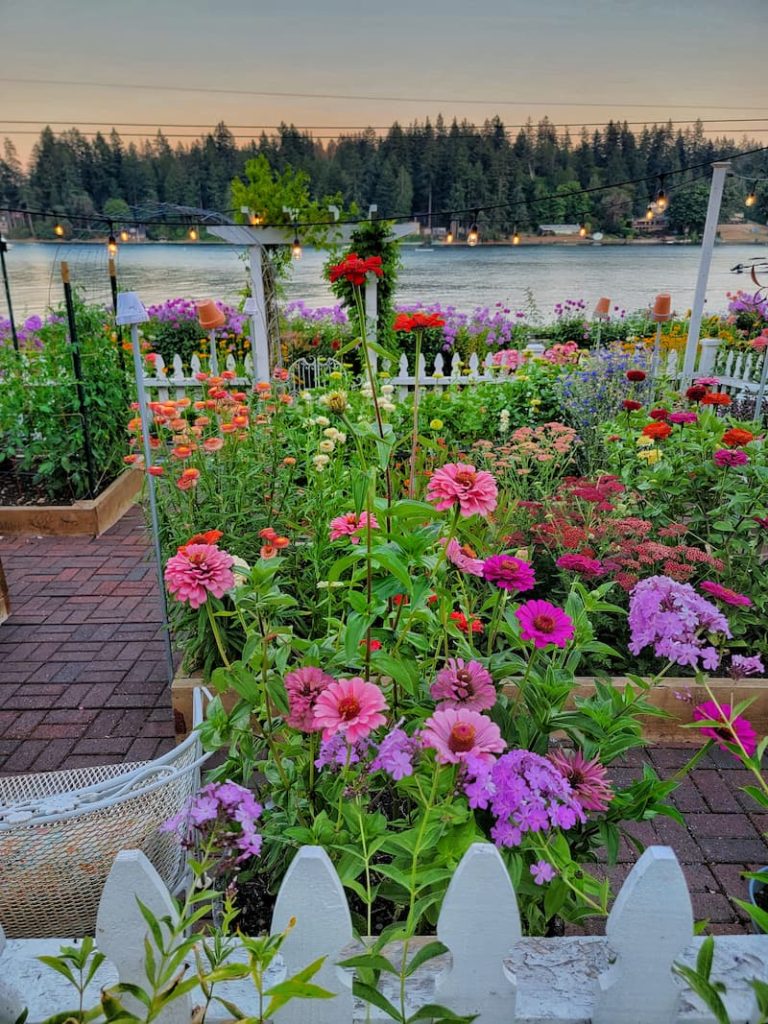
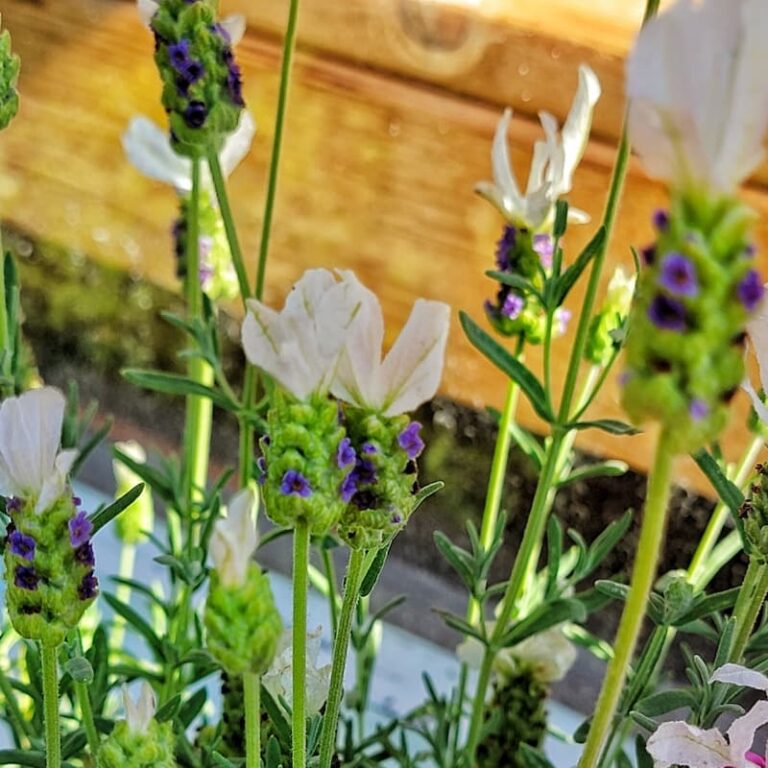

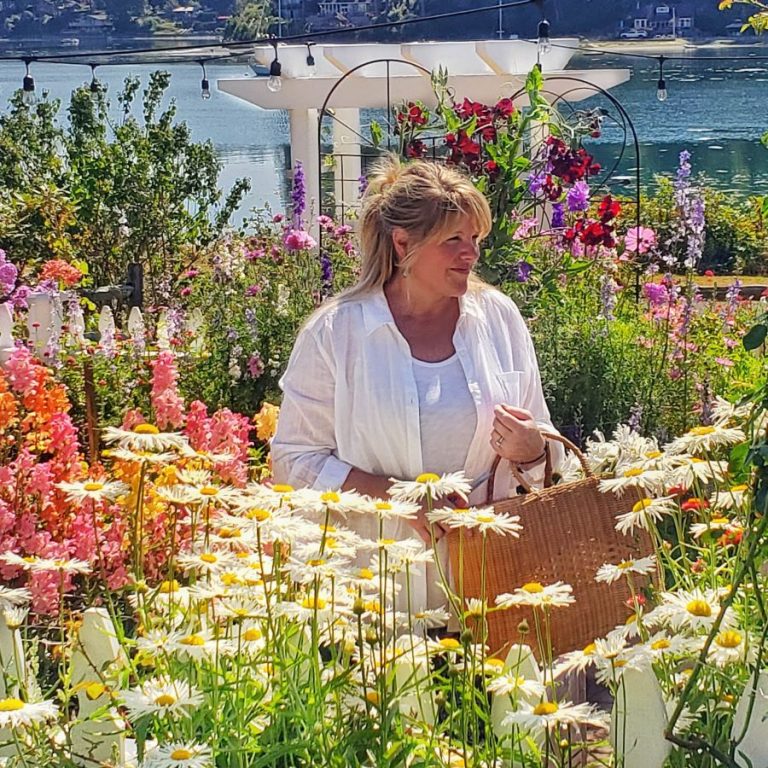
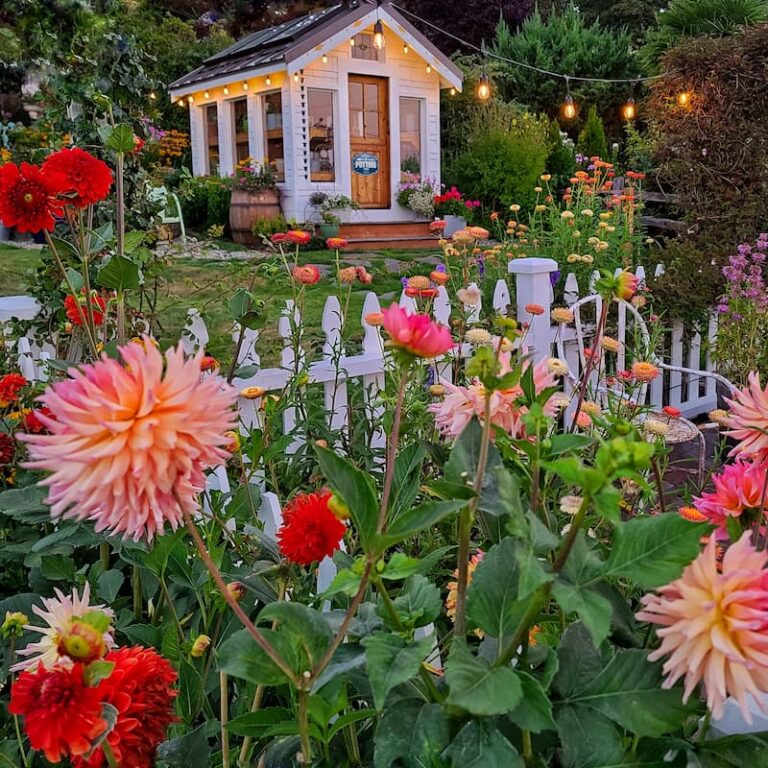
I’m in your same zone so all your suggestions were perfect for my garden! I’m hoping to try separating some of my bulbs this year too. Thanks for all the great tips and the inspiration of your gorgeous garden!
Your gardens already look so good!!!